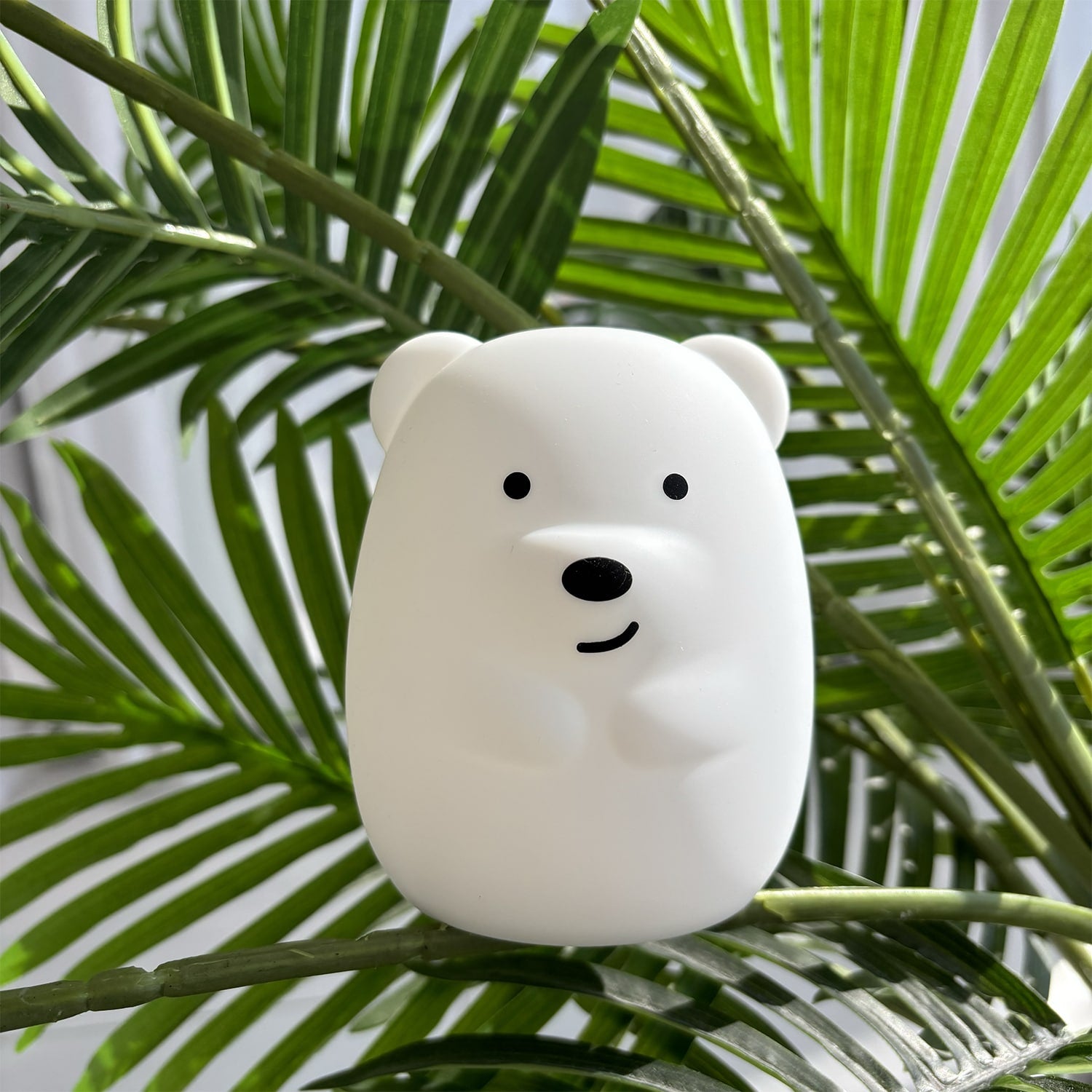Night lights for children are not just pretty decorative objects: they play an essential role in reassuring little ones and keeping them safe at night. To ensure they remain efficient and durable, regular maintenance is required. How to properly clean a night light? What products can you use without risk? And what tips can prevent it from wearing out too quickly?
In this article, we explain best practices for taking care of your night lights, from battery selection to solutions for frequent breakdowns. Follow our advice to preserve their effectiveness and provide a calming environment for your children.
What products should I use to clean a child’s night light?
Cleaning a night light seems simple, but it is a task that requires some precautions to ensure its safety and durability. Can we use usual household products? Not all, as some can be too aggressive. It is best to avoid bleach or cleaners containing ammonia, as they may damage the night light and leave harmful residue for your child. Instead, choose gentle, non-abrasive solutions to keep the night light clean without danger.
How to clean a child's night light safely?
To maintain the wall night light your child safely, follow these simple steps. First, carefully unplug the night light from its power source. Then prepare a solution of warm water and mild soap in a small container. Soak a clean cloth in this solution, wring it well, then wipe it gently over the exterior of the pilot light. Once the surface has been cleaned, dry it thoroughly with a dry cloth to prevent moisture from entering the device.
Tips for optimal cleaning
Don't forget to check hard-to-reach areas, like gaps around buttons or sensors. For this, a slightly moistened cotton swab is ideal: it allows you to reach these places without risk for the electronic components. If the night light has a silicone or soft plastic covering, make sure it is completely dry before plugging it in again.
Regular and careful maintenance helps extend the life of the night light and maintain a safe and healthy environment for your child. By taking care of every detail, you offer your little one a peaceful sleep in a comfortable and secure environment.

How to prevent premature wear of a children's night light?
Protecting your child's night light so that it lasts over time requires a few simple and effective actions. Start by choosing a night light made with durable materials, like soft silicone or ABS plastic, which are perfect for withstanding shocks and lasting longer.
Then, remember to place the night light out of reach of little hands when it is not in use. This limits the risk of falling and protects the sensitive internal parts of the device. Proper use is also crucial to avoid wear. Avoid leaving the pilot light on continuously for long periods of time without a break. Choosing a night light with a timer is a good option: it turns off on its own after a certain time, which reduces stress on its electrical components.
For maintenance, clean the exterior of the night light regularly with a soft, dry cloth to remove dust. If stains appear, use a slightly damp sponge with a little mild soap, then dry thoroughly. This light cleaning keeps the night light in good condition without damaging it.
Choose the batteries wisely for better durability
Batteries also play an important role in the longevity of the night light. Prefer rechargeable batteries or alkaline quality, which are more efficient and durable than traditional batteries. Replace them as soon as the light dims to avoid any leaks that could damage the internal components.
For example, little Léa has had a night light in the shape of a polar bear since she was born. Her parents follow these tips by cleaning her constantly and always using quality batteries. Result: the night light still works as well as the first day, creating a soothing atmosphere for Léa every evening.
By applying these tips, you will ensure a long life for your child's night light, as well as a reassuring and peaceful environment every night.

What type of batteries to choose for a child's night light?
The choice of batteries for your child's night light is essential to ensure good performance and safe use. Most night lights use AA or AAA batteries, which are readily available and reliable. However, battery type can impact durability, performance and even the environment.
Alkaline batteries: the classic choice
Alkaline batteries are a popular option for wall night lights because they offer stable energy and a reasonable lifespan at an affordable price. They maintain constant lighting throughout the night and are available in most stores. Ideal for daily use, they are a good compromise between cost and performance.
Opt for rechargeable batteries: for a long-term solution
If you are looking for a eco-friendly option, opt for rechargeable batteries, such as those made of nickel-metal hydride. Although a little more expensive initially, they can be recharged several hundred times, reducing waste and the need to buy new batteries. They are perfect for environmentally conscious families and offer constant power, ideal for a night light used every night.
Lithium batteries: maximum performance
Lithium batteries are a premium alternative for those who prefer to minimize battery changes. They offer higher energy, operate in extreme conditions (heat or cold) and are particularly efficient for devices requiring long-term power supply. However, they can be more expensive, but provide quality performance.
Tips for optimal battery use
To maximize battery life and ensure proper operation of the night light, here are some tips:
- Do not use old batteries with new ones to avoid the risk of leakage or damage.
- Remove the batteries if the night light will not be used for a long time to avoid corrosion.
- Choose brands recognized for their reliability and safety.
By choosing the right batteries and following these simple tips, you will ensure your child has a peaceful and safe sleep every night.

How to solve common problems of children's night lights?
Even if the wall night lights for children are generally designed to be durable, they can sometimes encounter problems. Here are the most effective and common alternatives.
The night light no longer lights up
If your night light does not light, start by checking the batteries: they could be worn out. Replace them with new batteries and check that they are inserted correctly. If this does not resolve the problem, examine the metal contacts of the batteries, which may be dirty or oxidized. Clean them gently with a dry cloth. If the switch seems to be in question, manipulate it to detect a false contact. If nothing changes, professional repair may be necessary.
The light is dim or flickering
Flickering or dim light may worry your child. Weak batteries are often the cause: replace them and see if that improves the situation. If your night light has a bulb, it may be worn out. Replace it if possible, following the manufacturer's instructions. Also check the internal connections, as a slight adjustment can sometimes be enough to restore stable light.
The night light heats up abnormally
A hot night light can be dangerous. Make sure its ventilation openings are not blocked. Use batteries that meet the manufacturer's recommendations to avoid overheating due to incompatibility. Finally, do not leave the night light lit for too long without supervision if it is not designed for prolonged use.
Each night light may have specific characteristics, so refer to the manufacturer's manual for suitable advice, or contact customer service for any safety questions.
Conclusion
To ensure a long life and safe use of children's night lights, regular maintenance and informed choices are essential. By choosing the right batteries, following simple cleaning practices and watching for signs of malfunction, you create a reassuring and lasting environment for your child. Taking care of the night light not only contributes to its effectiveness, but also to the nighttime comfort of little ones. By applying these practical tips, you are doing what is necessary to ensure that each night is soft and soothing under the protective light of their night light.








